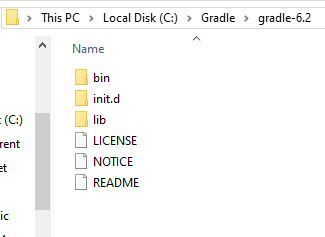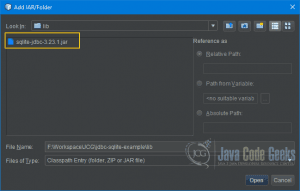If I don't stop the container before hibernating my PC, I'm pretty much guaranteed to have some kind of database corruption on the next start. This connection can be safely shared between multiple threads with optional locking as required (due to the guarantees offered by #1 above). In another life (2007) I worked for a company that does digital signage. They are working on it; please check for 'begin-concurrent' and 'wal2' branch names here. SQLite Find centralized, trusted content and collaborate around the technologies you use most. You can now choose to sort by Trending, which boosts votes that have happened recently, helping to surface more up-to-date answers. On a snapshotting system such as ZFS it should be fine because there won't be a race between updates and copying the WAL file and the DB file.
At some point we started seeing random corrupted SQLite databases. Is a neuron's information processing more complex than a perceptron? That can cause SQLITE_BUSY errors.
The software on them relied heavily on SQLite. But if a power loss or hard reset does occur, and if that results in content that was written after a sync reaching oxide while content written before the sync is still in a track buffer, then database corruption can occur. After a BEGIN IMMEDIATE, no other database connection will be able to write to the database or do a BEGIN IMMEDIATE or BEGIN EXCLUSIVE. Symptoms were always the same. It is database related. the database to backup), and a file name (for the backup file). I think quite a bit of software actually relies on closing and re-opening file descriptors, especially stdin/stdout/stderr just before/after forking. In this SQLite tutorial, you will learn how to access SQLite database and use it-. The drives were fine, only the database was getting corrupted.
Import SQLite database using Qt/QSqlDatabase. https://www.postgresql.org/message-id/flat/CAMsr%2BYHh%2B5Oq I/O error while obtaining a lock leads to corruption. I think this myth persists mostly because it can be surprising difficult to coax an OS into sending a flush command for much the same reason disk drives get accused of lying about it: performance. This procedure will work with any ACID compliant database, and SQLite is one of these. I am surprised by this! They may not honor the FUA bit, though, but hopefully nobody relies on this if they expect it to work with consumer disks (See e.g. The drives weren't actually failing, the setup failed due to how the WD drives work. >> Systems that run automatic backups in the background might try to make a backup copy of an SQLite database file while it is in the middle of a transaction. By clicking Accept all cookies, you agree Stack Exchange can store cookies on your device and disclose information in accordance with our Cookie Policy. Stick your Plex DB on NFS and itll get messed up in very short order. So far, we have found this to be the most performant and simple way to get business data in and out of a SQLite database file. Nope. If you have to handle (write code for) 2 and 3, why isnt something like Postgres better?
If you use SQLite in a normal application for user data, you should flush data after (about) every write (if you use it for caching, you can be a bit more loose, as its relatively fine to discard the database when it gets corrupted. Although in this case it probably won't do much unless you're very unlucky because the message will almost certainly not end up being valid for the DB so it'll either ignore it, return an error or maybe drop the connection without corruption. So the question then that I have is, in the case of, a) First close fd 2, and then call dup(1), or does it. I have an application which uses the QSQLITE driver with a QSqlDatabse on a file on the local filesystem. > The following symbolic values in
In case the answer is b) then it seems to me, though I may be overlooking something, that we could allow calls like b) and inside of the dup2 syscall keep the id of the fd that we are using as newfd, since it is unambiguously requested that this is intended, while at the same never reusing fd id in the dup syscall. Not all programs write files in exclusive mode. I am just finding my feet with Lazarus/FPC. See e.g. Not in the slightest. Or is there something screwy that was causing it to get associated with the open database file? In other words, you can't have a transaction start at X, have another transaction start at X+1, issue DML and commit, and expect your original transaction from X being able to commit - it will never be able to. > does SQLite checksum blocks (pages) of data? No SQLite though. When I say I have an app crash 5 times a week, I mean any one of my installed apps. It's a shame because the hn website is really difficult to navigate on mobile (collapsing threads with that tiny + is a nightmare). I don't have specific examples of the 'copy code' that I tried and which didn't work. I can copy it all over the place while my app is open if I use windows explorer, but not from within the app. That case is covered too as long as the program makes use of the dup2 syscall to make the switch instead of close followed by open.
I am using sqlite3 datasets, and all is so far working again.
Copyright - Guru99 2022 Privacy Policy|Affiliate Disclaimer|ToS, SQLite CREATE Database in a Specific Location using Open, Create a database and populate it with tables from a file, How to Download & Install SQLite on Windows, SQLite String Functions: REPLACE, SUBSTR, TRIM, ROUND, SQLite Create, Alter, Drop Table with Examples, SQLite Tutorial PDF: (Download) SQLite Documentation, Top 20 SQLite Interview Questions & Answers (2022 Update), Open the Windows Command Line tool (cmd.exe) from the start, type, From the Installation and packages tutorial, you should now have created an SQLite folder in the. I want to backup the whole database (it's all in one file) I have attached a zip file that shows the problem. It doesn't get more than a passing mention, but section 2.1 is worth noting. @coleifer (author of peewee) has a pretty informative blog post exploring in part transactional semantics, which might be of value to people who want to know more about this. This command backs up a database to a file. Snapshots are global "freeze" of file system, which is consistent because of ACID. This implies it's pronounced ess-queue-lite. > Backup or restore while a transaction is active. 2. If you want to drop database SQLite, all you have to do is to delete the database file.
But it will make you sure that no one writes to the database during the copy operation which makes your database consistent. Did Sauron suspect that the Ring would be destroyed? That is a guarantee by an actual standard. If you take a consistent snapshot of the filesystem first, I would think that would be the same as a crash in the middle of a transaction. E: It's implementation defined, ie not guaranteed. (Or integrate with 3rd party drivers, like ELDOS.).
And SQLITE would still need the special-casing to prevent using low-numbered fds. Do you skip backing up the file or retry With a its fine if others are reading mode, with the risk of getting a hybrid of multiple versions? Explicitly locking/flushing is an acceptable solution, but the Qt API doesn't seem to expose this.
If that keeps failing, theres a problem. This seems to mean that if a regular end user is browsing the web while backups run on their computer, it's possible they could be unlucky and get a bad backup that would corrupt the database if they had to restore it. Is there a suffix that means "like", or "resembling"? In most cases the size of the code is much smaller than the data handled, so for random errors (perfectly working DRAM has a bit error rate somewhere in the general vicinity of 10^-14/bit*hr) the distribution of errors is in accordance to that proportion. You cant create two databases in the same location with the same name, the database name is unique in the same directory. https://pubs.opengroup.org/onlinepubs/9699919799.2018edition > All functions that open one or more file descriptors shall, unless specified otherwise, atomically allocate the lowest numbered available file descriptor. If you copy while transactions are ongoing, you're reading different parts of a file at different points in time. Ill reply here since then both you and parent can see it and comment further.
Isn't "deploy many systems in hard to reach places" the prime target for enterprise-grade hardware? People who know what NFS is will be on Emby or similar before I finish writing this comment. BIOS would show the disk drive was present but that it had no capacity or name. However, .clone only uses the current database, so you can't specify another database to clone.
I wonder how much this cost the company to fully resolve.
WAL mode doesn't really have "read-only" connection (if you try to open a read-only connection by marking as READ_ONLY with sqlite_open_v2, it will error out for WAL mode). 465), Design patterns for asynchronous API communication. Story: man purchases plantation on planet, finds 'unstoppable' infestation, uses science, electrolyses water for oxygen, 1970s-1980s. So it seems by tracking wall time, the library could do better than have to rely on the drive, and could be more on guard against lying drives.
This does not mean you can copy the file and it will be consistent. E.g. Don't do this btw, the FS sync in docker for windows/mac is really slow and prone to causing corruption and errors if you do. I always thought "people willing to pay five to ten times market rate per gigabyte" was the target of enterprise-grade storage Yep. Cannot Get Optimal Solution with 16 nodes of VRP with Time Windows. I even store it in the git repo and and it makes backups so easy. For instance typically databases are accessed through a socket interface which uses the same pool of file descriptors as open(). The .clone command is similar to the .backup command. System would get slower and slower until one day it would hard reboot itself and then claim there was no disk drive installed. It got bad enough that we refused to deploy systems that shipped with those drives.
Suffice it to say, that I tried every copyfile, filecopy, and other variant of copy function within delphi and lazarus including some posted 'custom' stream versions etc, and none of them could open the database file for read access to copy it. It sluist works, the file is the data.. very clear.
How likely is it to arise in practice?
I've found WAL mode with one writer thread and as many reader threads as you want works pretty well. For example, .backup /remote/folder/mybackup.db. > Also it's not exactly guaranteed that 0, 1 and 2 are the fd numbers for stdin, out and err on program start. I doubt most consumer applications write to the database nearly as often as we were. You'll still have older backups to go to. I finally ended up calling a dos command to copy the damn file: Are you trying to backup a table or the database?? 


